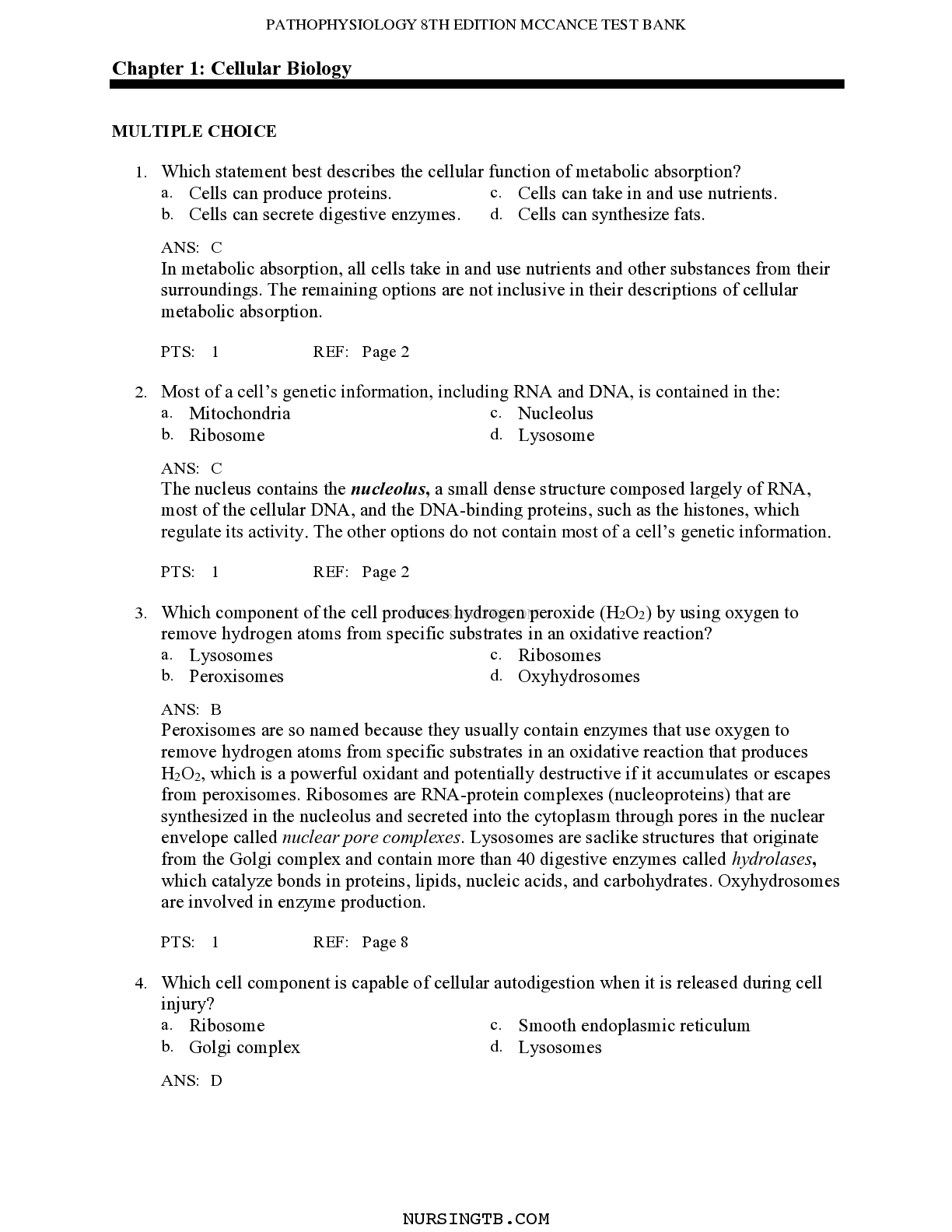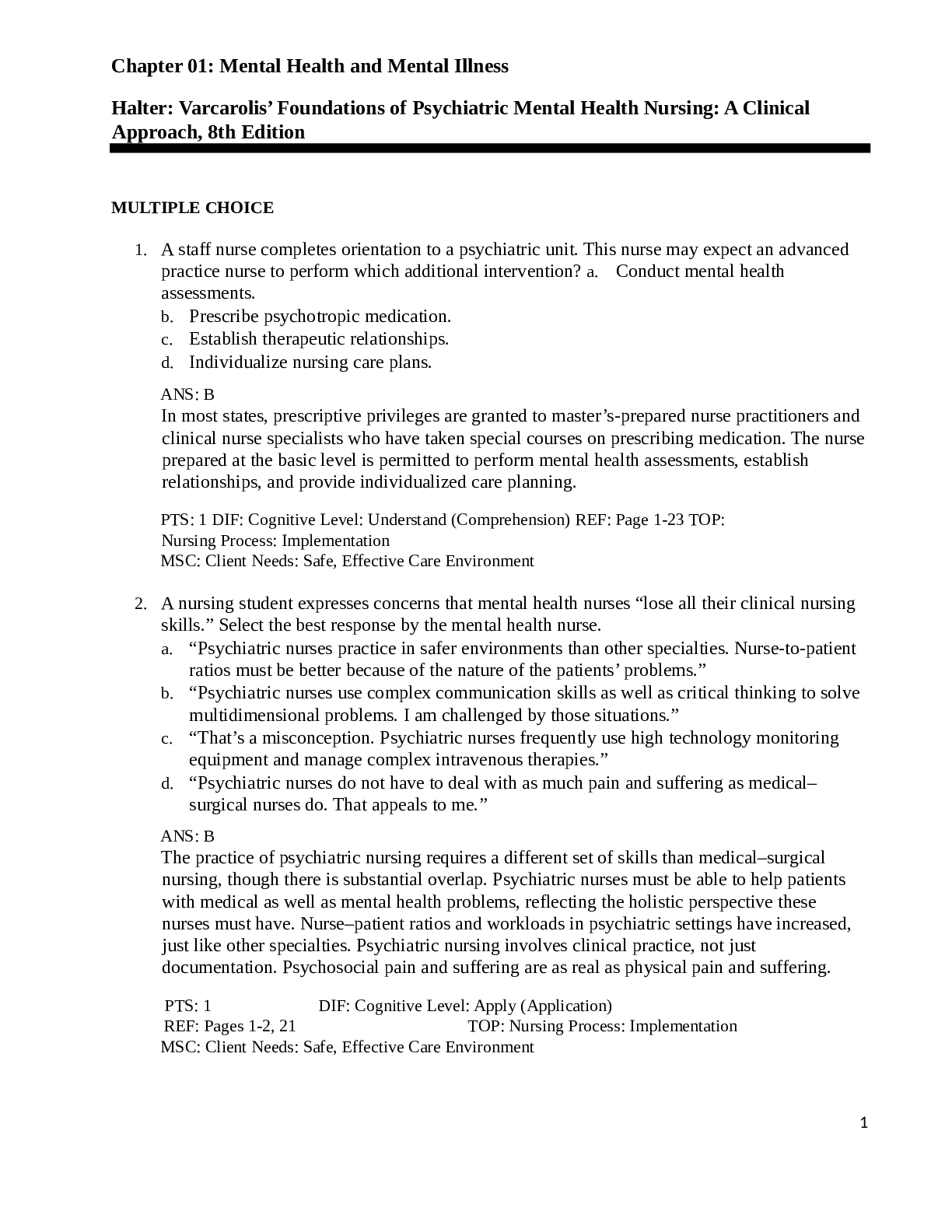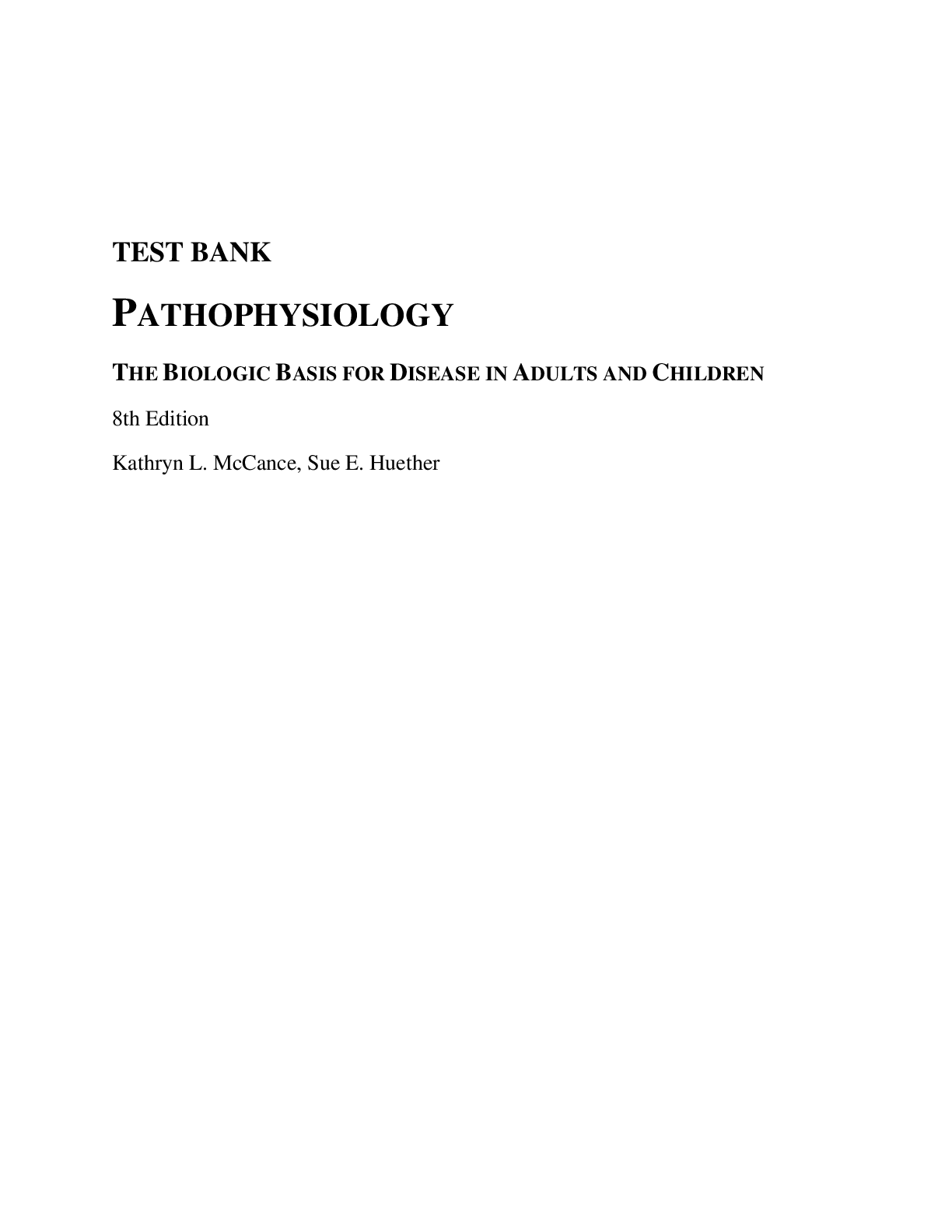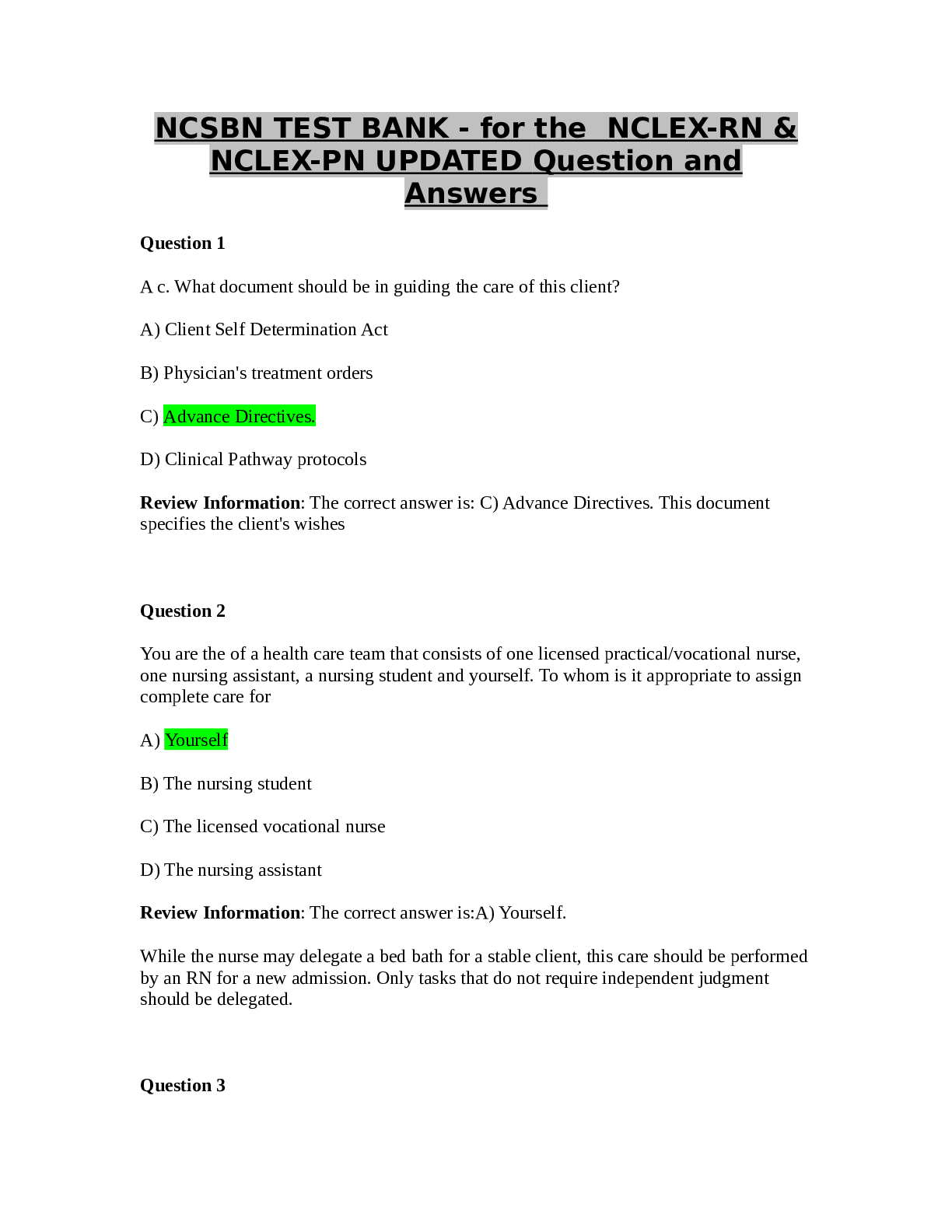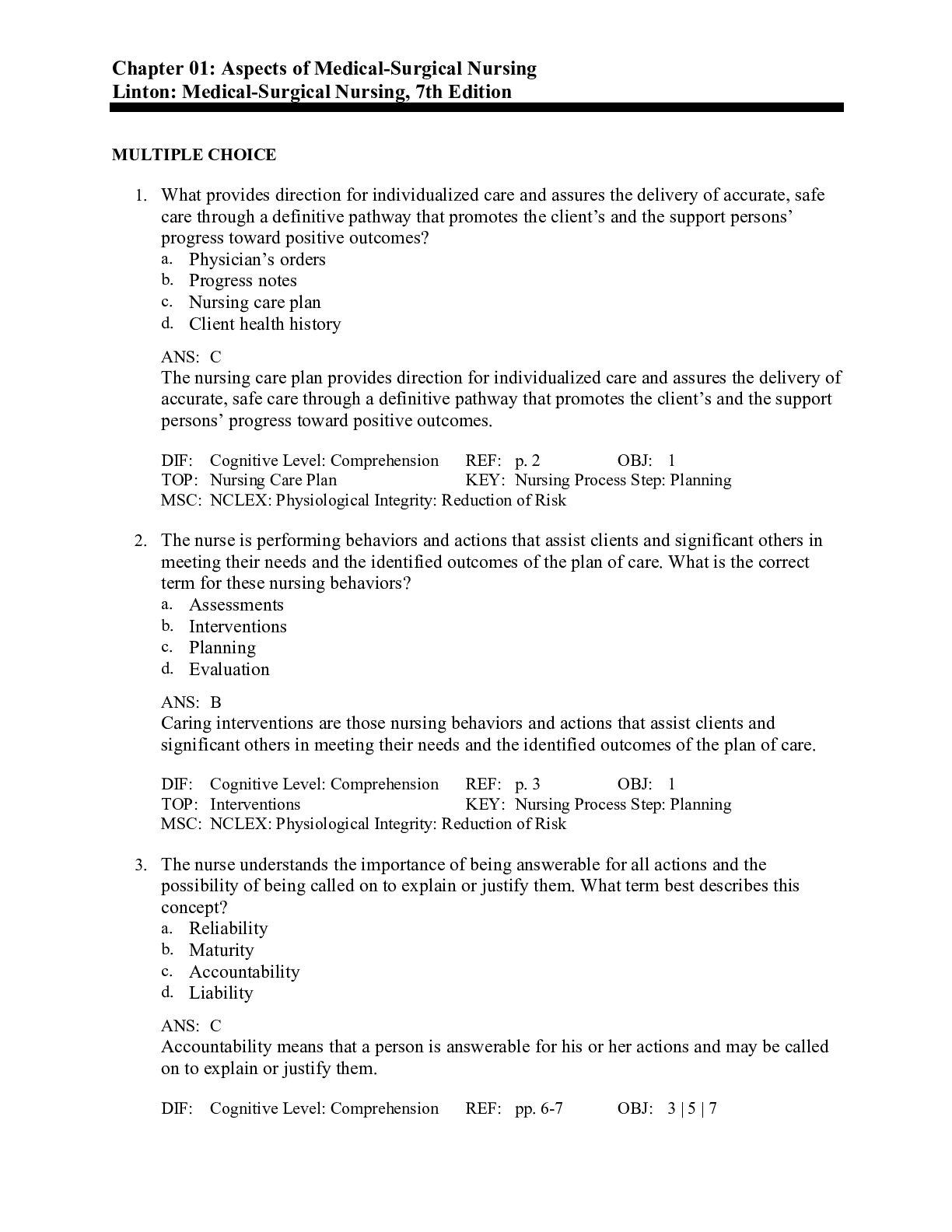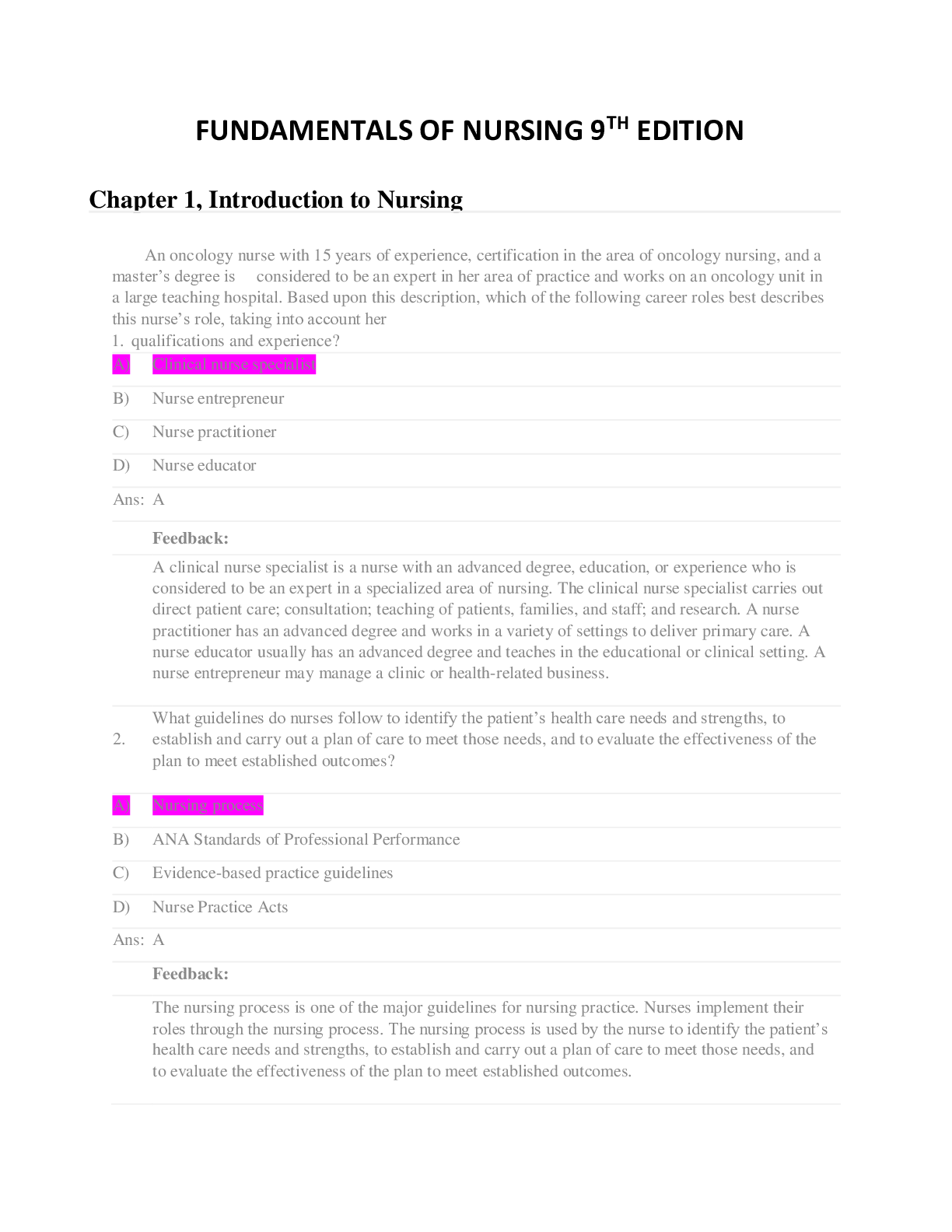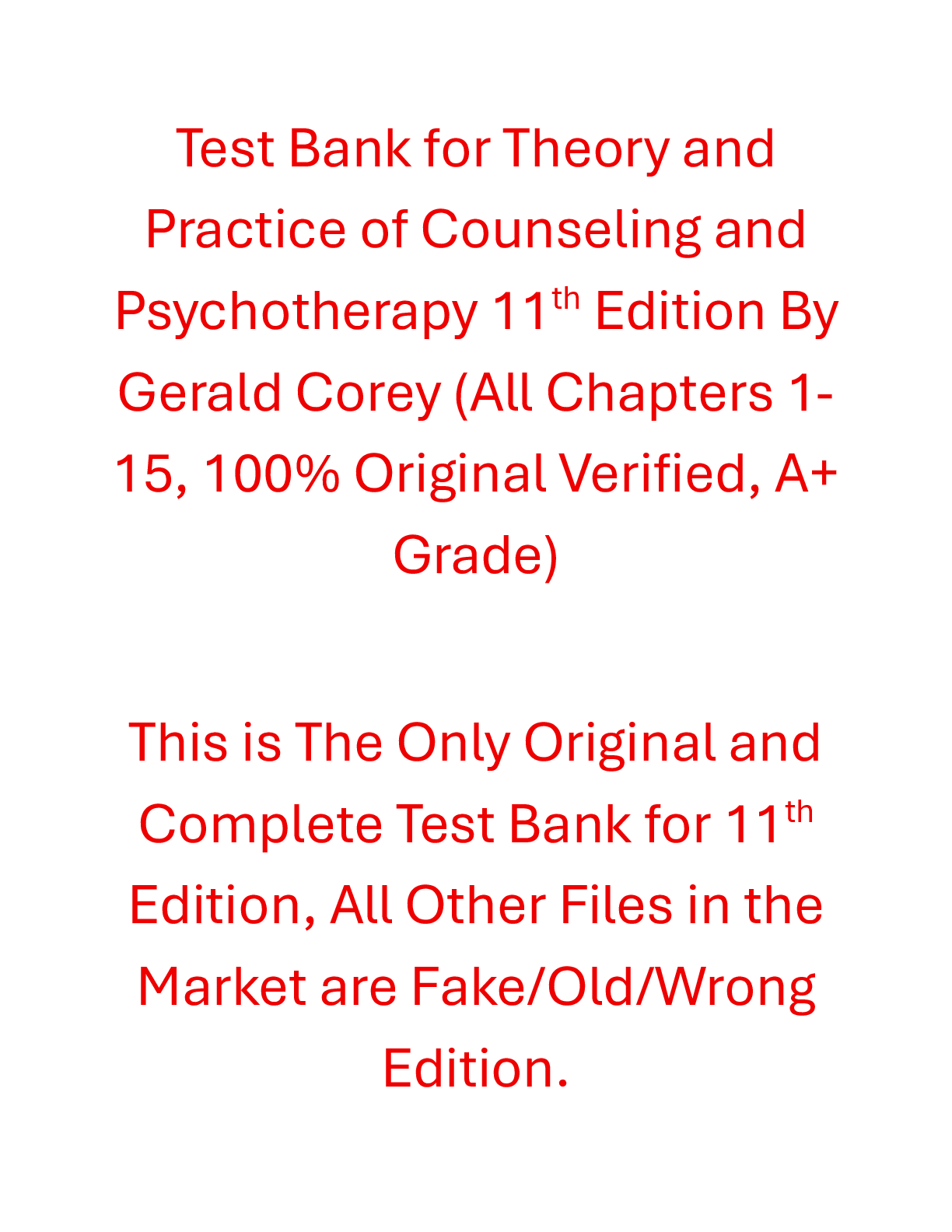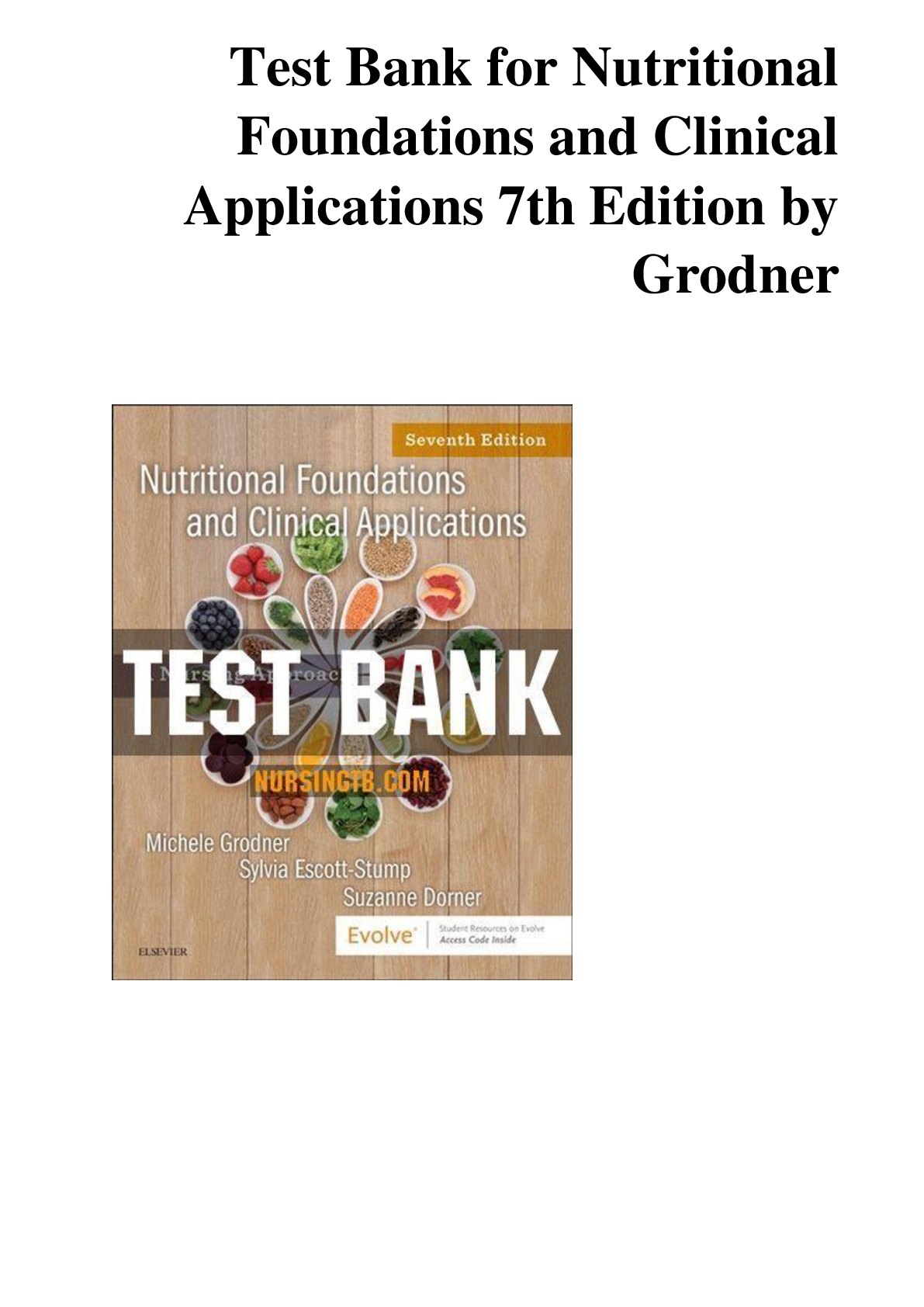*NURSING > TEST BANKS > University of South Carolina/MATH 1/NCSBN ON latest document 2021 with correct answers highlighted. (All)
University of South Carolina/MATH 1/NCSBN ON latest document 2021 with correct answers highlighted.
Document Content and Description Below
NCSBN ON-LINE REVIEW 1.A client has been hospitalized after an automobile accident. A full leg cast was applied in the emergency room. The most important reason for the nurse to elevate the casted l ... eg is to A) Promote the client's comfort B) Reduce the drying time C) Decrease irritation to the skin D) Improve venous return D: Improve venous return. Elevating the leg both improves venous return and reduces swelling. Client comfort will be improvedas well. 2. The nurse is reviewing with a client how to collect a clean catch urine specimen. What is the appropriate sequence to teach the client? A) Clean the meatus, begin voiding, then catch urine stream B) Void a little, clean the meatus, then collect specimen C) Clean the meatus, then urinate into container D) Void continuously and catch some of the urine A: Clean the meatus, begin voiding, then catch urine stream. A clean catch urine is difficult to obtain and requires cleardirections. Instructing the client to carefully clean the meatus, then void naturally with a steady stream prevents surface bacteriafrom contaminating the urine specimen. As starting and stopping flow can be difficult, once the client begins voiding it’s best tojust slip the container into the stream. Other responses do not reflect correct technique 3. Following change-of-shift report on an orthopedic unit, which client should the nurse see first? A) 16 year-old who had an open reduction of a fractured wrist 10 hours ago B) 20 year-old in skeletal traction for 2 weeks since a motor cycle accident C) 72 year-old recovering from surgery after a hip replacement 2 hours ago D) 75 year-old who is in skin traction prior to planned hip pinning surgery. C: Look for the client who has the most imminent risks and acute vulnerability. The client who returned from surgery 2 hoursago is at risk for life threatening hemorrhage and should be seen first. The 16 yearold should be seen next because it is still thefirst post-op day. The 75 year-old is potentially vulnerable to age-related physical and cognitive consequences in skin tractionshould be seen next. The client who can safely be seen last is the 20 year-old who is 2 weeks post-injury. 4. A client with Guillain Barre is in a nonresponsive state, yet vital signs are stable and breathing is independent. What should thenurse document to most accurately describe the client's condition? A) Comatose, breathing unlabored B) Glascow Coma Scale 8, respirations regular C) Appears to be sleeping, vital signs stable D) Glascow Coma Scale 13, no ventilator required B: Glascow Coma Scale 8, respirations regular. The Glascow Coma Scale provides a standard reference for assessing ormonitoring level of consciousness. Any score less than 13 indicates a neurological impairment. Using the term comatose providestoo much room for interpretation and is not very precise. 5. When caring for a client receiving warfarin sodium (Coumadin), which lab test would the nurse monitor to determine therapeuticresponse to the drug? A) Bleeding time B) Coagulation time C) Prothrombin time D) Partial thromboplastin time C: Prothrombin time. Coumadin is ordered daily, based on the client''s prothrombin time (PT). This test evaluates the adequacyof the extrinsic system and common pathway in the clotting cascade; Coumadin affects the Vitamin K dependent clotting factors. 6.A client with moderate persistent asthma is admitted for a minor surgical procedure. On admission the peak flow meter is measuredat 480 liters/minute. Post-operatively the client is complaining of chest tightness. The peak flow has dropped to 200 liters/minute.What should the nurse do first? A) Notify both the surgeon and provider B) Administer the prn dose of albuterol C) Apply oxygen at 2 liters per nasal cannula D) Repeat the peak flow reading in 30 minutes B: Administer the prn dose of albuterol. Peak flow monitoring during exacerbations of asthma is recommended for clients withmoderate-to-severe persistent asthma to determine the severity of the exacerbation and to guide the treatment. A peak flowreading of less than 50% of the client''s baseline reading is a medical alert condition and a short-acting beta-agonist must be takenimmediately. 7.A client had 20 mg of Lasix (furosemide) PO at 10 AM. Which would be essential for the nurse to include at the change of shiftreport? A) The client lost 2 pounds in 24 hours 1 B) The client’s potassium level is 4 mEq/liter. C) The client’s urine output was 1500 cc in 5 hours D) The client is to receive another dose of Lasix at 10 PM C: The client’s urine output was 1500 cc in 5 hours. Although all of these may be correct information to include in report, theessential piece would be the urine output. 8.A client has been tentatively diagnosed with Graves' disease (hyperthyroidism). Which of these findings noted on the initial nursingassessment requires quick intervention by the nurse? A) a report of 10 pounds weight loss in the last month B) a comment by the client "I just can't sit still." C) the appearance of eyeballs that appear to "pop" out of the client's eye sockets D) a report of the sudden onset of irritability in the past 2 weeks C: the appearance of eyeballs that appear to "pop" out of the client''s eye sockets. Exophthalmos or protruding eyeballs is adistinctive characteristic of Graves'' Disease. It can result in corneal abrasions with severe eye pain or damage when the eyelid isunable to blink down over the protruding eyeball. Eye drops or ointment may be needed. 9. The nurse has performed the initial assessments of 4 clients admitted with an acute episode of asthma. Which assessmentfinding would cause the nurse to call the provider immediately? A) prolonged inspiration with each breath B) expiratory wheezes that are suddenly absent in 1 lobe C) expectoration of large amounts of purulent mucous D) appearance of the use of abdominal muscles for breathing B: expiratory wheezes that are suddenly absent in 1 lobe. Acute asthma is characterized by expiratory wheezes caused byobstruction of the airways. Wheezes are a high pitched musical sounds produced by air moving through narrowed airways.Clients often associate wheezes with the feeling of tightness in the chest. However, sudden cessation of wheezing is an ominousor bad sign that indicates an emergency -- the small airways are now collapsed. 10.During the initial home visit, a nurse is discussing the care of a client [Show More]
Last updated: 2 years ago
Preview 1 out of 443 pages

Buy this document to get the full access instantly
Instant Download Access after purchase
Buy NowInstant download
We Accept:

Reviews( 0 )
$15.00
Can't find what you want? Try our AI powered Search
Document information
Connected school, study & course
About the document
Uploaded On
Jun 11, 2021
Number of pages
443
Written in
All
Additional information
This document has been written for:
Uploaded
Jun 11, 2021
Downloads
0
Views
145



